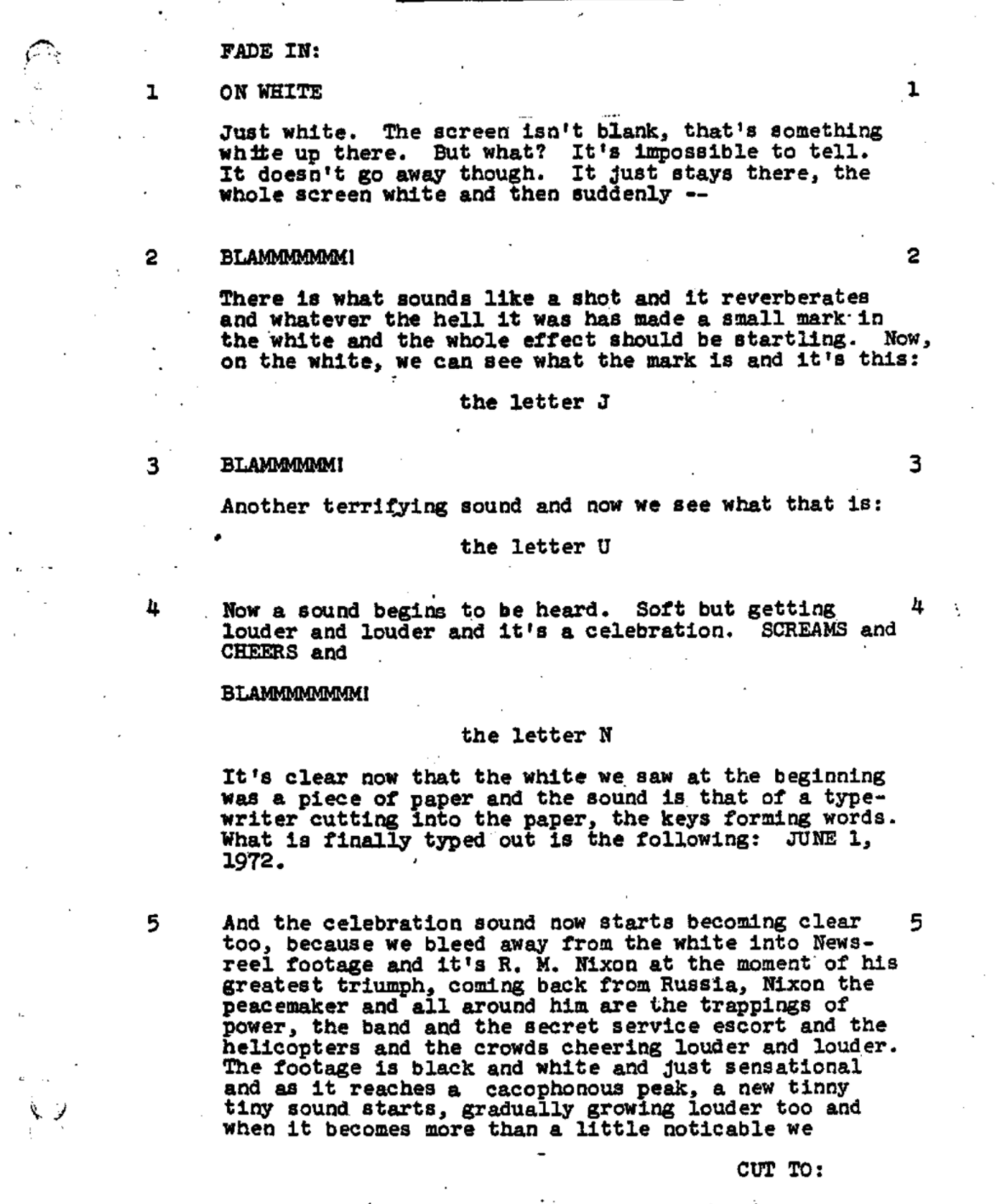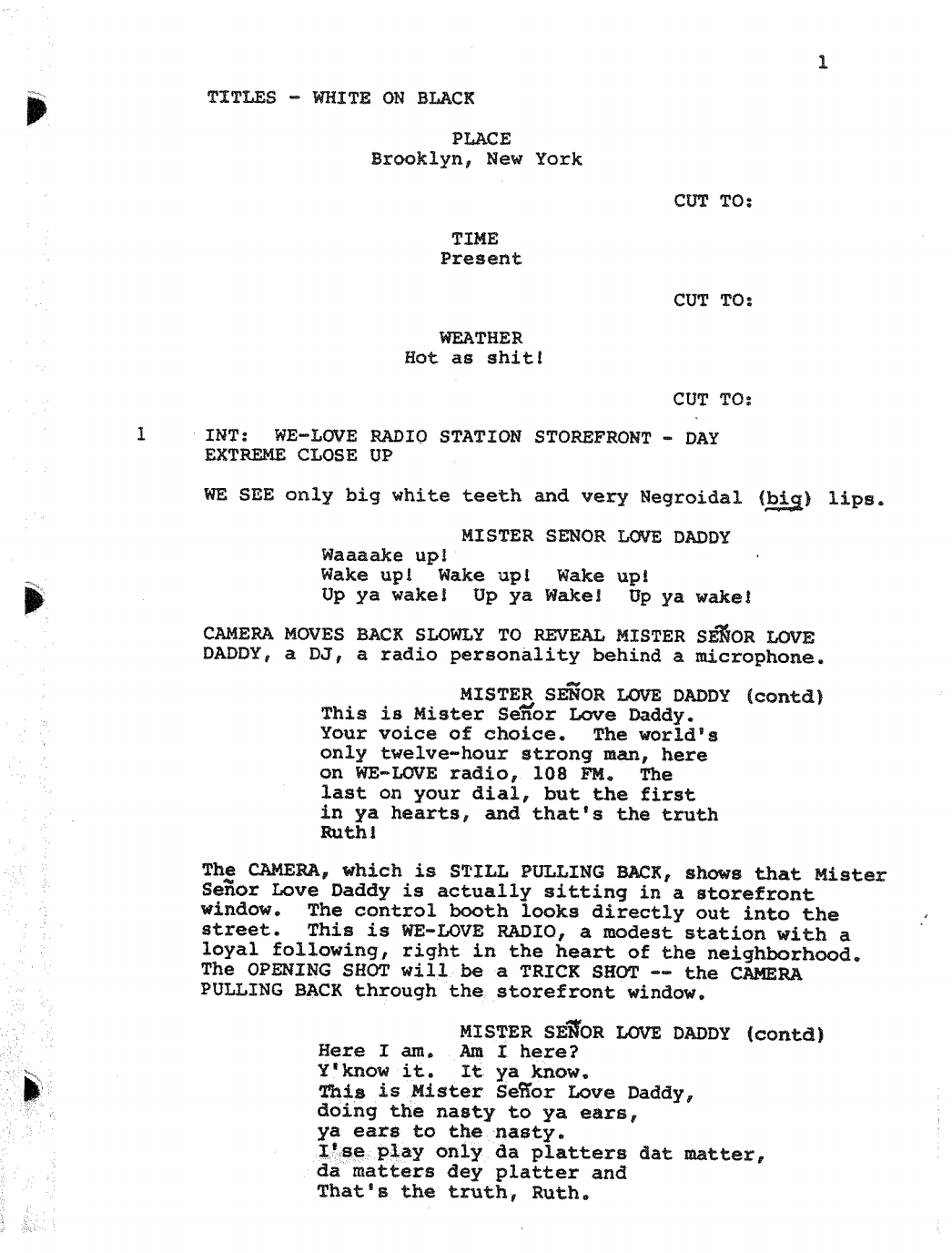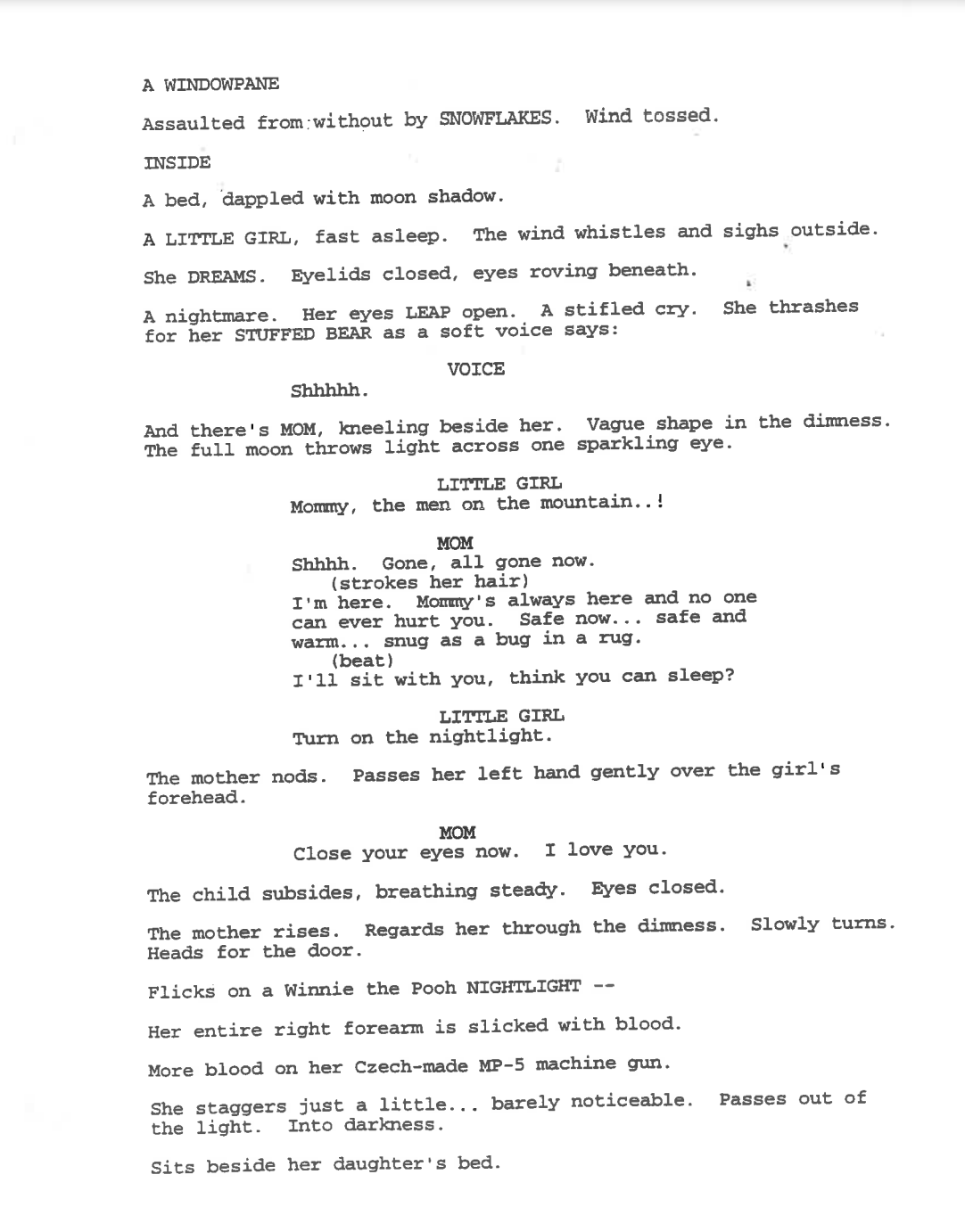WRITING YOUR SCREENPLAY: PAGE ONE
At the WGF Library, we operate under the belief that reading scripts is an essential part of becoming a better writer. Even while the library is closed to in-person visitors, we continue to keep the socially distanced inspiration and education flowing via blog posts.
This new series is for any feature writer who may have felt neglected during our months of breaking down popular television shows. Each week, we will hone in on one particular aspect of writing, structuring, or formatting a feature screenplay. As we zero in on certain script elements and writing techniques, we will include short examples from some of our favorite feature scripts. (To clarify, this is a series about script drafts; not brainstorming or outlines or treatments, but putting words on the page.)
As always, if you have inquiries about scripts in the WGF Library (or about anything else writing-related), virtual reference assistance is available to you. E-mail library@wgfoundation.org. While we cannot send you PDFs of scripts, we can always advise and answer specific questions. For direct access to librarians, we also hold virtual library hours on zoom twice a week. It’s a great opportunity to be in the company of other writers and get work done. Sign-up here.
So, where do we start in a series about writing and formatting feature scripts?
Let’s start on page one.
The first page is arguably the most significant page in a screenplay. As a writer, with that 8 1/2” by 11” space, you have the chance to express in a simple way what your movie is about, prove your capacity for writing cinematically AND compel your reader to turn to the next page.
First pages are less intimidating if you view them as an opportunity.
Let’s look at how five different scripts utilize their first page.
ALL THE PRESIDENT’S MEN (1976)
Screenplay by William Goldman
Based on the book by Carl Bernstein & Bob Woodward
A few things to consider in the writing:
Goldman doesn’t use scene headings. This produces a kind of disorienting effect on the reader.
BLAAAAMM!! BLAAAAAAMM!! is written in comic book style onomatopoeia, which is always exciting to read.
Screenwriting wisdom always advices to open where it’s “most interesting.” Here we think we’re witnessing gunshots, which gets our heart rates up immediately.
BUT it’s revealed that the BLAAAAAM gunshot sound is actually words being written with a typewriter… which is a powerful audiovisual metaphor… a statement about the disruptive power of words, which is, arguably, the theme of the movie.
DO THE RIGHT THING (1989)
Written by Spike Lee
A few things to consider in the writing:
Right from the get-go, the script incorporates text on screen. This harkens back to the silent era and title cards, giving the words an urgency and magnitude. Lee uses the opportunity to give us a sense of his personal style — his writing style — at the beginning of the movie.
Do the Right Thing asks its viewers to WAKE-UP! That’s the backbone of the whole movie. It feels very deliberate to open with those words and to open on a close-up of a mouth speaking them.
It’s disorienting, just like the words on a typewriter in All the President’s Men, yet opening tight on lips and a mouth ensures that we are paying attention to the words spoken.
THE EDGE OF SEVENTEEN (2016)
Written by Kelly Fremon Craig
A few things to consider in the writing:
From the outset, we like this girl. The writing tells us she’s kind of a misfit.
Nadine’s proclamation that she is going to take her own life grabs us by the throat on page one. This is an effective statement to open with because we — as readers or viewers — immediately start asking questions. Is she really going to kill herself? Why does she want to kill herself? How is Mr. Bruner going to react?
Additionally, Nadine’s speech about the nature of her future suicide is so humorously detailed. The monologue shows us she’s smart and neurotic and needs to be noticed. More than anything, it makes us want to follow her (and Fremon Craig’s words) beyond just this first page.
THE LONG KISS GOODNIGHT (1996)
Written by Shane Black
A few things to consider in the writing:
Notice there are only a few pieces of description on this page that go over one line. It’s almost as if every line is a new shot in the film. Also, the verbs used here really crackle, yet feel natural. All of it keeps the reader’s eye cascading effortlessly down the page.
The technique used in this instance is shocking contrast. The last thing the reader expects to see after a mother sweetly puts her child to sleep is that she’s holding a machine gun and that her arm is dripping with blood! Of course the reader is going to turn to the next page! This is also the same contrast that makes the mom (the protagonist) such a compelling character.
PARASITE (2019)
Screenplay by Bong Joon Ho and Han Jin Won
Story by Bong Joon Ho
A few things to consider in the writing:
In Parasite, the writers open with a family realizing they can no longer steal Wi-Fi. As readers, we get to watch how they react and attempt to work around this fact.
By the end of the first page, we know three things about this family: 1) They have no money, 2) They’re (lovingly) quick and abrasive with each other, and 3) Despite being poor, they’re resourceful and have humor.
Bong and Han don’t waste space with excessive description, simply giving us each character’s age and letting their actions and words speak for themselves.
The writing style is lean and — literally — mean and by the end of the page, WE’RE IN.
We hope the examples are helpful and that you can apply the techniques and lessons presented here when tackling your own work, no matter your preferred writing medium. Happy writing!





